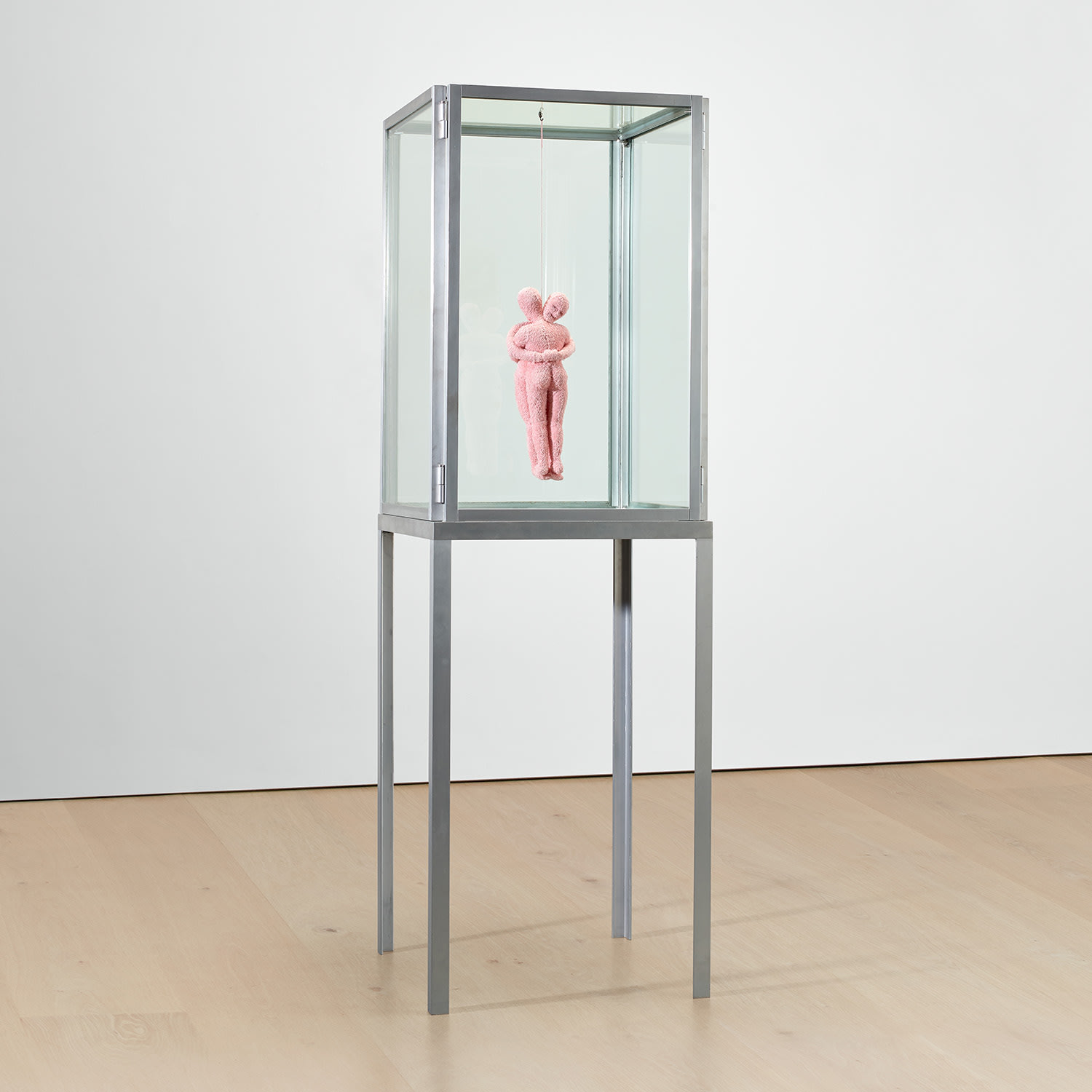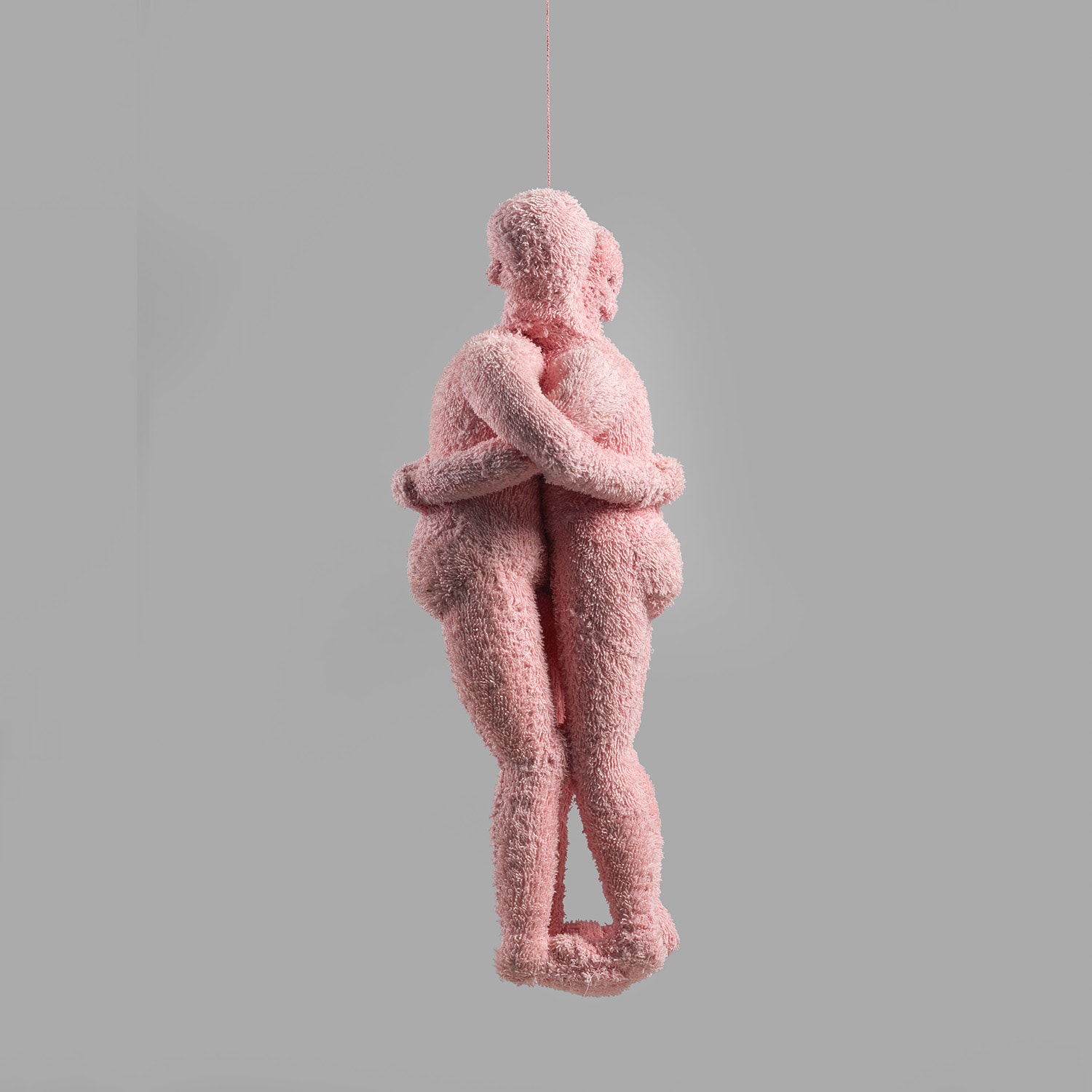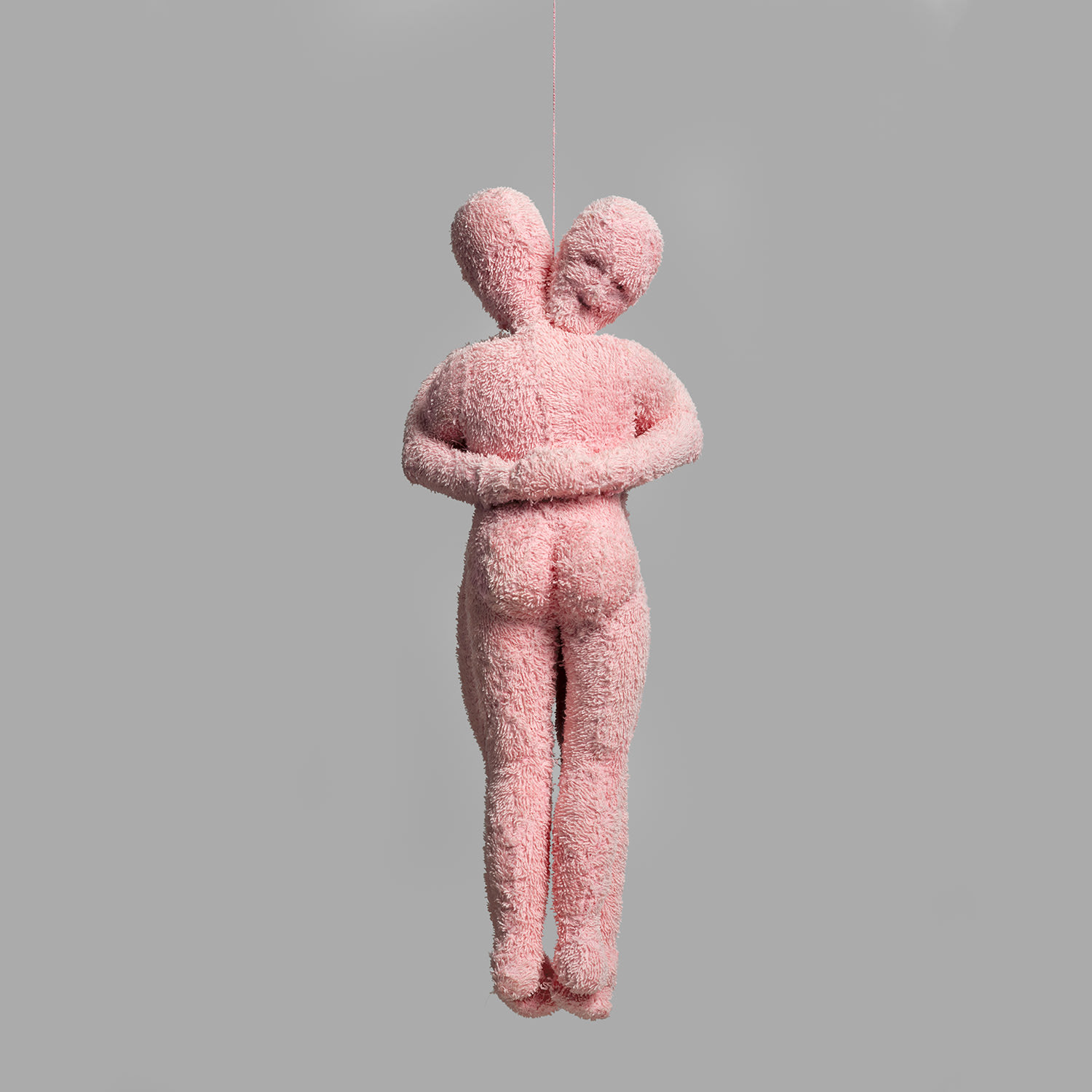







9
Louise Bourgeois
Couple
fabric and hanging piece in aluminium, glass and wood vitrine
figure 43.2 x 16.5 x 15.2 cm (17 x 6 1/2 x 5 7/8 in.)
overall 193 x 61 x 61 cm (76 x 24 x 24 in.)
overall 193 x 61 x 61 cm (76 x 24 x 24 in.)
Executed in 2002.
Further Details
Full-Cataloguing
Louise Bourgeois
French-American | B. 1911 D. 2010Known for her idiosyncratic style, Louise Bourgeois was a pioneering and iconic figure of twentieth and early twenty-first century art. Untied to an art historical movement, Bourgeois was a singular voice, both commanding and quiet.
Bourgeois was a prolific printmaker, draftsman, sculptor and painter. She employed diverse materials including metal, fabric, wood, plaster, paper and paint in a range of scale — both monumental and intimate. She used recurring themes and subjects (animals, insects, architecture, the figure, text and abstraction) as form and metaphor to explore the fragility of relationships and the human body. Her artworks are meditations of emotional states: loneliness, jealousy, pride, anger, fear, love and longing.